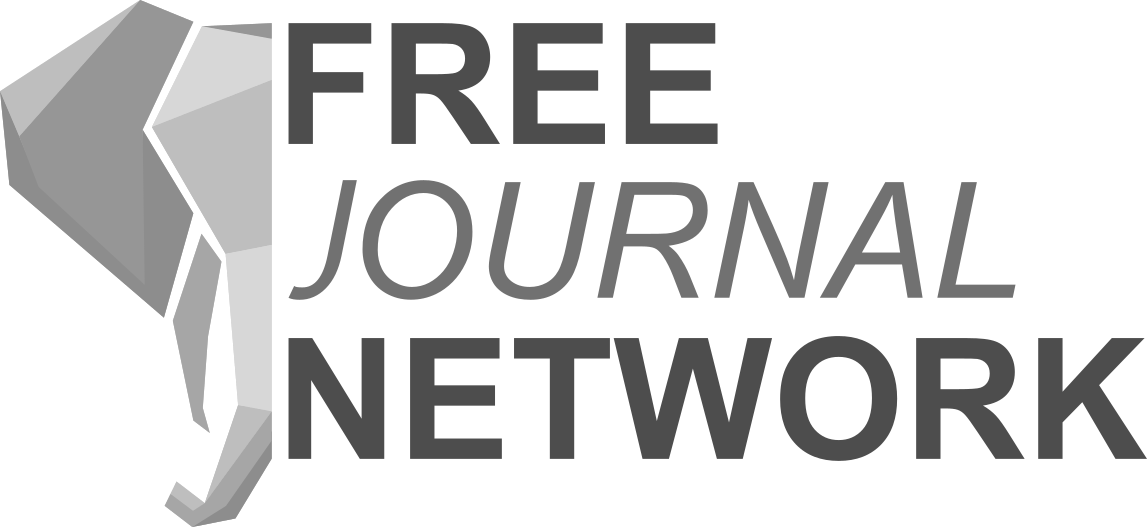Los perros y su estrecho vínculo con las personas ¿Qué los hace únicos?
DOI:
https://doi.org/10.24215/2422572Xe102Palabras clave:
vínculo perro-humano, sociabilidad, docilidad, sincronizaciónResumen
A lo largo de sus vidas los perros tienen la capacidad de formar fuertes vínculos afectivos con los humanos. Además de apegarse a sus cuidadores, pueden relacionarse de manera exitosa con personas desconocidas. Se han descrito una serie de características psicológicas generales de los perros que estarían en la base de este vínculo y que habrían posibilitado el desarrollo de complejas habilidades socio-cognitivas en los mismos. En el presente trabajo se describen y se analizan las evidencias con respecto a tres de esas capacidades generales: la sociabilidad, la docilidad y la habilidad de sincronización con las personas. Estas se han propuesto como factores importantes de selección durante el proceso de domesticación y mostraron además ser flexibles y modificarse durante la ontogenia. Se discuten diversos abordajes que permiten estudiar la importancia que tienen dichas características, junto a otros rasgos, para el desarrollo de un vínculo único entre perros y personas.
Referencias
Ainsworth, M. D. S., Blehar, M. C., Waters, E. y Wall, S. (1978). Patterns of attachment: A psychological study of the strange situation. Lawrence Erlbaum Associates.
Barrera, G., Jakovcevic, A., Elgier, A. M., Mustaca, A. E. y Bentosela, M. (2010). Responses of shelter and pet dogs to an unknown human. Journal of Veterinary Behaviour, 5, 339-344. https://doi.org/10.1016/j.jveb.2010.08.012
Bentosela, M., Wynne, C. D., D'Orazio, M., Elgier, A. y Udell, M. A. (2016). Sociability and gazing toward humans in dogs and wolves: Simple behaviors with broad implications. Journal of the Experimental Analysis of Behavior, 105(1), 68-75. https://doi.org/10.1002/jeab.191
Berns, G. S., Brooks, A. M. y Spivak, M. (2015). Scent of the familiar: An fMRI study of canine brain responses to familiar and unfamiliar human and dog odors. Behavioural Processes, 110, 37-46. https://doi.org/10.1016/j.beproc.2014.02.011
Bhattacharjee, D., Sau, S., Das, J. y Bhadra, A. (2017). Free-ranging dogs prefer petting over food in repeated interactions with unfamiliar humans. Journal of Experimental Biology, 220, 4654-4660. https://doi.org/10.1242/jeb.166371
Bowlby, J. (1969). Attachment and loss: Vol. 1. Attachment. Basic Books.
Buttner, A., Thompson, B., Strasser, R. y Santo, J. (2015). Evidence for a synchronization of hormonal states between humans and dogs during competition. Physiology & Behavior, 147, 54-62. https://doi.org/10.1016/j.physbeh.2015.04.010
Cainzos, R., Delgado, M. B. y Koscinczuk, P. (2018). Relación entre sociabilidad, presión arterial y frecuencia cardiaca en el perro doméstico (Canis familiaris). Revista de Investigaciones Veterinarias del Perú, 29(1), 31-40. http://doi.org/10.15381/rivep.v29i1.14079
Cavalli, C., Carballo, F., Dzik, V., Underwood, S. y Bentosela, M. (2018). Are animal-assisted activities dogs different from pet dogs? A comparison of their sociocognitive abilities. Journal of Veterinary Behavior, 23, 76-81. https://doi.org/10.1016/j.jveb.2017.12.001
Clearfield, M. W, Osborne, C. N. y Mullen, M. (2008). Learning by looking: Infants' social looking behavior across the transition from crawling to walking. Journal of Experimental Child Psychology, 100(4), 297-307. https://doi.org/10.1016/j.jecp.2008.03.005
De Rosnay, M., Cooper, P. J., Tsigaras, N. y Murray, L. (2006). Transmission of social anxiety from mother to infant: An experimental study using a social referencing paradigm. Behaviour Research Therapy, 44(8), 1165-1175. https://doi.org/10.1016/j.brat.2005.09.003
Dostálková, I. y Spinka, M. (2007). Synchronization of behaviour in pairs: The role of communication and consequences in timing. Animal Behaviour, 74, 1735-1742. https://doi.org/10.1016/j.anbehav.2007.04.014
Duranton, C., Bedossa, T. y Gaunet, F. (2017). Interspecific behavioural synchronization: Dogs present locomotor synchrony with humans. Scientific Reports, 7, 12384. https://doi.org/10.1038/s41598-017-12577-z
Duranton, C., Bedossa, T. y Gaunet, F. (2018). Pet dogs synchronize their walking pace with that of their owners in open outdoor areas. Animal Cognition, 21, 219-226. https://doi.org/10.1007/s10071-017-1155-x
Duranton, C., Bedossa, T. y Gaunet, F. (2019). Pet dogs exhibit social preference for people who synchronize with them: what does it tell us about the evolution of behavioral synchronization? Animal Cognition, 22(2), 243-250. https://doi.org/10.1007/s10071-019-01241-w
Duranton, C. y Gaunet, F. (2018). Behavioral synchronization and affiliation: Dogs exhibit human-like skills. Learning & Behavior, 46, 364-373. https://doi.org/10.3758/s13420-018-0323-4
Feuerbacher, E. N. y Wynne, C. D. L. (2016). Application of functional analysis methods to assess variables involved in dog-human interactions. Journal of Applied Behavior Analysis, 49, 970-974. https://doi.org/10.1002/jaba.318
Frank, H. (2011).Wolves, dogs, rearing and reinforcement: Complex interactions underlying species differences in training and problemsolving performance. Behavior Genetics. https://doi.org/10.1007/s10519-011-9454-5
Frank, H. y Frank, M. G. (1982). Comparison of problem-solving performance in six-week-old wolves and dogs. Animal Behaviour, 30, 95-98. https://doi.org/10.1016/s0003-3472(82)80241-8
Frank, M. G. y Frank, H. (1983). Inhibition training in wolves and dogs. Behavioural Processes, 8, 363-377. https://doi.org/10.1016/0376-6357(83)90024-4
Freedman, D. G., King, J. A. y Elliot, O. (1961). Critical period in the social development of dogs. Science, 133, 1016-1017. https://doi.org/10.1126/science.133.3457.1016
Gácsi, M., Gyoöri, B., Virányi, Z., Kubinyi, E., Range, F., Belényi, B. y Miklósi, Á. (2009). Explaining dog wolf differences in utilizing human pointing gestures: Selection for synergistic shifts in the development of some social skills. PLOS ONE, 4(8), e6584. https://doi.org/10.1371/annotation/9d7a0174-3068-4c44-bb98-b8a9bc5a99d5
Gobbo, E. y Zupan, M. (2020). Dogs’ sociability, owners’ neuroticism and attachment style to pets as predictors of dog aggression. Animals, 10(2), 315. https://doi.org/10.3390/ani10020315
Hare, B. y Tomasello, M. (2005).The emotional reactivity hypothesis and cognitive evolution. Trends in Cognitive Sciences, 9, 464-465. https://doi.org/10.1016/j.tics.2005.08.010
Kerepesi, A., Jonsson, G. K., Miklosi, A., Topál, J., Csanyi, V. y Magnusson, M. S. (2005). Detection of temporal patterns in dog-human interaction. Behavioural Processes, 70(1), 69-79. https://doi.org/10.1016/j.beproc.2005.04.006
Lazzaroni, M., Range, F., Backes, J., Portele, K., Scheck, K. y Marshall-Pescini, S. (2020). The effect of domestication and experience on the social interaction of dogs and wolves with a human companion. Frontiers in Psychology, 11, 785. https://doi.org/10.3389/fpsyg.2020.00785
Lynch, J. J. y McCarthy, J. F. (1969). Social responding in dogs: Heart rate changes to a person. Psychophysiology, 5, 389-393. https://doi.org/10.1111/j.1469-8986.1969.tb02838.x
Merola, I., Prato-Previde, E. y Marshall-Pescini, S. (2012). Social referencing in dog-owner dyads? Animal Cognition, 15(2), 175-85. https://doi.org/10.1007/s10071-011-0443-0
Merola, I., Prato-Previde, E., Lazzaroni, M. y Marshall-Pescini, S. (2014). Dogs' comprehension of referential emotional expressions: Familiar people and familiar emotions are easier. Animal Cognition, 17(2), 373-385. https://doi.org/10.1007/s10071-013-0668-1
Miklósi, Á., Kubinyi, E., Topál, J., Gácsi, M., Virányi, Z. y Csányi, V. (2003). A simple reason for a big difference: Wolves do not look back at humans, but dogs do. Current Biology, 13(9), 763-766. https://doi.org/10.1016/s0960-9822(03)00263-x
Nagasawa, M., Mogi, K. y Kikusui, T. (2009). Attachment between humans and dogs. Japanese Psychological Research, 51, 209-221. https://doi.org/10.1111/j.1468-5884.2009.00402.x
Odendaal, J. y Meintjes, R. (2003). Neurophysiological correlates of affiliative behaviour between humans and dogs. The Veterinary Journal, 165, 296-301. https://doi.org/10.1016/s1090-0233(02)00237-x
Prato-Previde, E., Custance, D. M., Spezio, C. y Sabatini, F. (2003). Is the dog-human relationship an attachment bond? An observational study using Ainsworth’s strange situation. Behavior, 120, 225-254.
Range, F., Marshall-Pescini, S., Kratz, C. y Virányi, Z. (2019). Wolves lead and dogs follow, but they both cooperate with humans. Scientific Reports, 9(1). https://doi.org/10.1038/s41598-019-40468-y
Rehn, T. y Keeling, L. J. (2016). Measuring dog-owner relationships: Crossing boundaries between animal behaviour and human psychology. Applied Animal Behaviour Science, 183, 1-9. https://doi.org/10.1016/j.applanim.2016.07.003
Ryan, M. G., Storey, A. E., Anderson, R. E. y Walsh, C. J. (2019). Physiological indicators of attachment in domestic dogs (Canis familiaris) and their owners in the Strange Situation Test. Frontiers in Behavioral Neuroscience, 13, 162. https://doi.org/10.3389/fnbeh.2019.00162
Savalli, C. y Mariti, C. (2020). Would the dog be a person's child or best friend? Revisiting the dog-tutor attachment. Frontiers in Psychology, 11, 576713. https://doi.org/10.3389/fpsyg.2020.576713
Schöberl, I., Wedl, M. y Kotrschal, K. (2013). Heart rate and heart rate variability in owners and their dogs. Journal of Veterinary Behavior, 8(4), e34. https://doi.org/10.1016/j.jveb.2013.04.026
Scott, J. P. y Fuller, J. L. (1965). Genetics and the social behavior of the dog. The University of Chicago Press.
Sundman, A. S., Van Poucke, E., Holm, A., Faresjö, Å., Theodorsson, E., Jensen, P. y Roth, L. (2019). Long-term stress levels are synchronized in dogs and their owners. Scientific Reports, 9(1), 1-7. https://doi.org/10.1038/s41598-019-43851-x
Svartberg, K., Tapper, I., Temrin, H., Radesäter, T. y Thorman, S. (2005). Consistency of personality traits in dogs. Animal Behaviour, 69(2), 283-291. https://doi.org/10.1016/j.anbehav.2004.04.011
Topál, J., Miklósi, Á., Csányi, V. y Dóka, A. (1998). Attachment behavior in dogs (Canis familiaris): A new application of Ainsworth’s (1969) Strange Situation Test. Journal of Comparative Psychology, 112, 219-229. https://doi.org/10.1037//0735-7036.112.3.219
Tuber, D. S., Hennessy, M. B., Sanders, S. y Miller, J. A. (1996). Behavioral and glucocorticoid responses of adult domestic dogs (Canis familiaris) to companionship and social separation. Journal of Comparative Psychology, 110(1), 103-108. https://doi.org/10.1037/0735-7036.110.1.103
Udell, M. A. R. y Wynne, C. D. L. (2010). Ontogeny and phylogeny: Both are essential to human-sensitive behavior in the genus Canis. Animal Behaviour, 79, e9-e14. https://doi.org/10.1016/j.anbehav.2009.11.033
Ujfalussy, D.J., Virányi, Z., Gácsi, M., Faragó, T., Pogány, A., Bereczky, B.M., Miklósi, A. y Kubinyi, E. (2020). Comparing the tractability of young hand-raised wolves (Canis lupus) and dogs (Canis familiaris). Scientific Reports, 10, 14678. https://doi.org/10.1038/s41598-020-71687-3
Vilà, C., Savolainen, P., Maldonado, J. E., Amorim, I. R., Rice, J. E., Honeycutt, R. L., Crandall, K. A., Lundeberg, J. y Wayne, R. K. (1997). Multiple and ancient origins of the domestic dog. Science, 276(5319), 1687-1689. https://doi.org/10.1126/science.276.5319.1687
von Holdt, B. M., Shuldiner, E., Koch, I. J., Kartzinel, R. Y., Hogan, A., Brubaker, L., Wanser, L., Stahler, D., Wynne, C. D. L., Ostrander, E. A., Sinsheimer, J. S. y Udell, M. A. R. (2017). Structural variants in genes associated with human Williams-Beuren syndrome underlie stereotypical hypersociability in domestic dogs. Science Advances, 3(7), e1700398. https://doi.org/10.1126/sciadv.1700398
Wynne, C. (2019). Dog is love. Why and how your dog loves you. Houghton Mifflin Harcourt.
Descargas
Publicado
Número
Sección
Licencia
Derechos de autor 2021 Gabriela Barrera, Mariana Bentosela

Esta obra está bajo una licencia internacional Creative Commons Atribución 4.0.
![]()
Los autores/as que publiquen en esta revista aceptan las siguientes condiciones:
- Los autores/as conservan los derechos de autor y ceden a la revista el derecho de la primera publicación, con el trabajo registrado con la licencia de atribución de Creative Commons, que permite a terceros utilizar lo publicado siempre que mencionen la autoría del trabajo y a la primera publicación en esta revista.
- Los autores/as pueden realizar otros acuerdos contractuales independientes y adicionales para la distribución no exclusiva de la versión del artículo publicado en esta revista (p. ej., incluirlo en un repositorio institucional o publicarlo en un libro) siempre que indiquen claramente que el trabajo se publicó por primera vez en esta revista.
- Se permite y recomienda a los autores/as a publicar su trabajo en Internet (por ejemplo en páginas institucionales o personales) antes y durante el proceso de revisión y publicación, ya que puede conducir a intercambios productivos y a una mayor y más rápida difusión del trabajo publicado (veaThe Effect of Open Access).




































